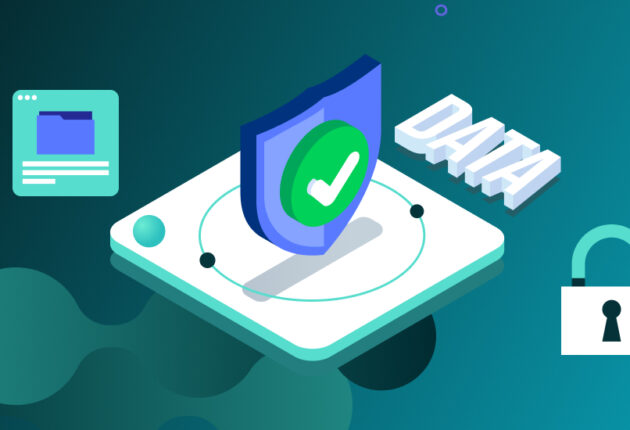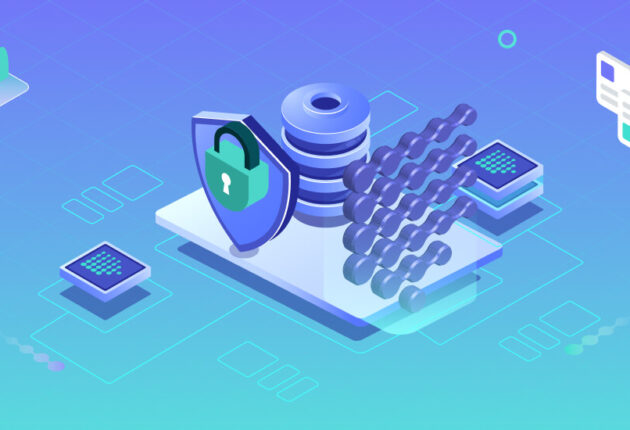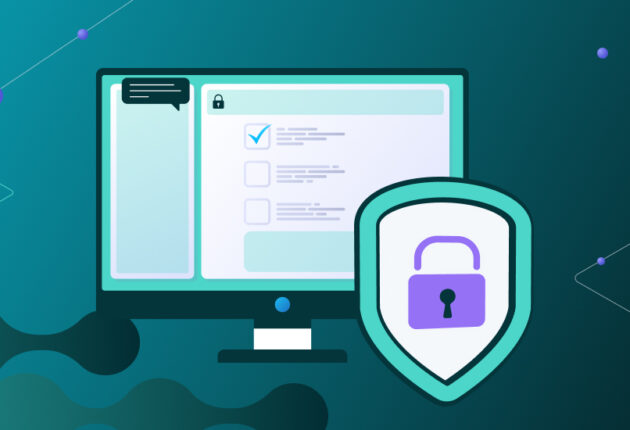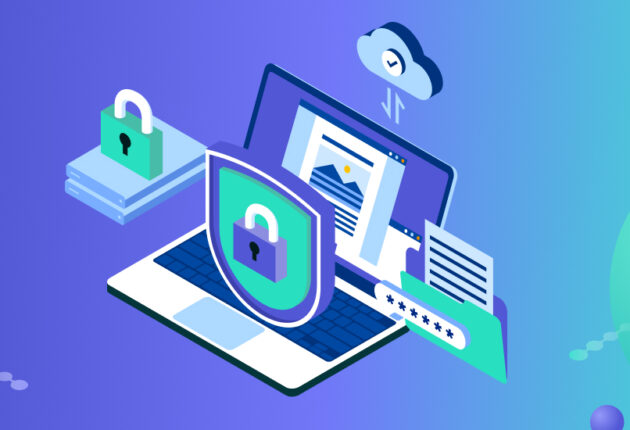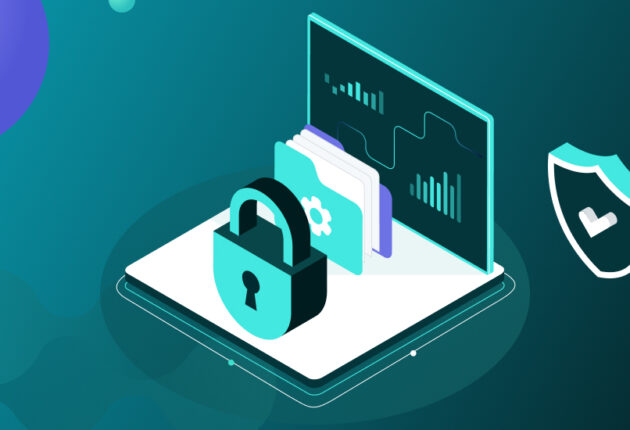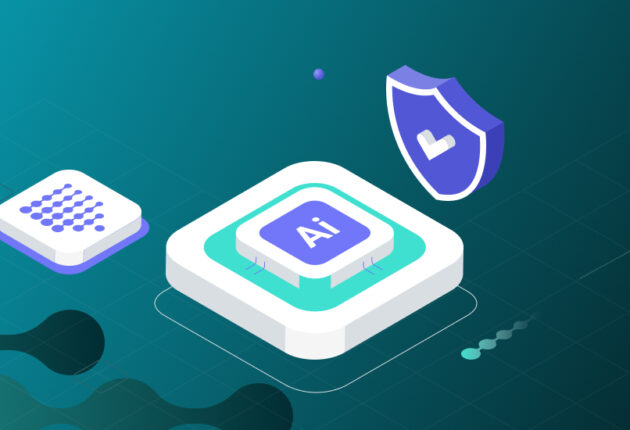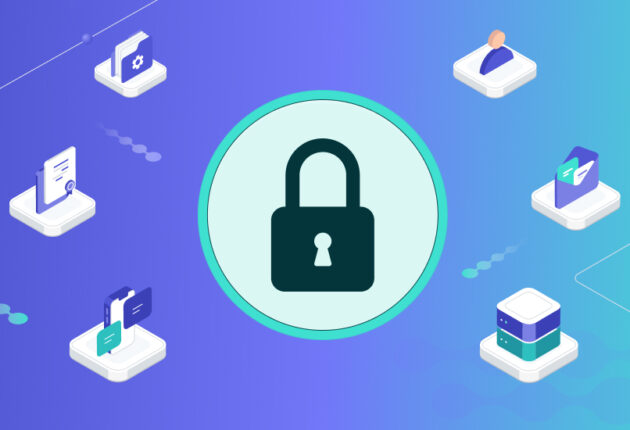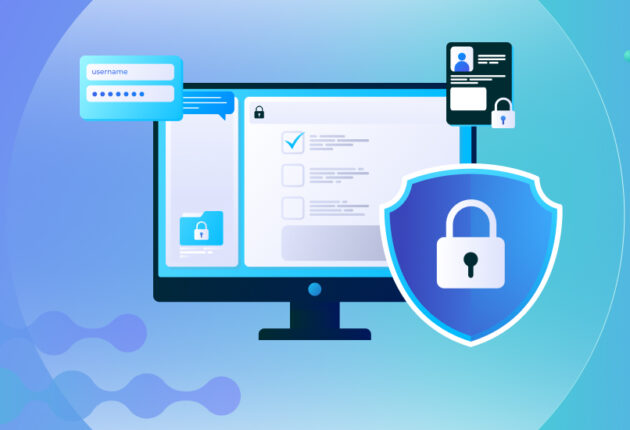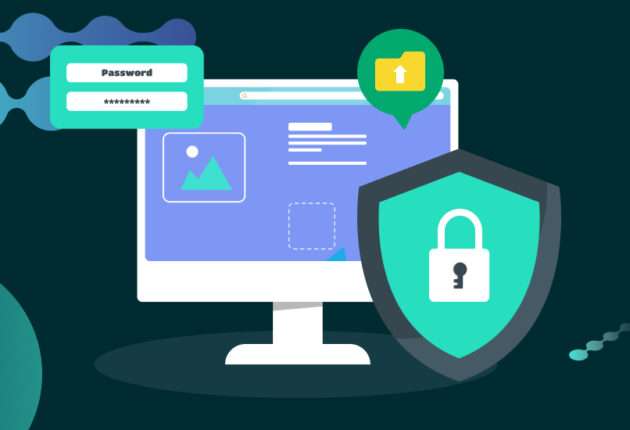With the increasing reliance on data, robust data protection has never been more critical. Data breaches can result in significant financial losses, reputation damage, and legal repercussions. Data protection encompasses the measures and strategies organizations employ to safeguard their sensitive information from unauthorized access, theft, or misuse. In this article, we delve into the realm of data protection best practices crucial for safeguarding your business’s sensitive information. From cloud data protection to differential privacy, we explore essential strategies to shield your enterprise from potential threats while maintaining compliance and integrity.
In this article:
- Importance of data protection for the business
- Developing a data protection program and its key components
- Understanding data protection best practices
- Embracing Differential Privacy
- Conclusion
Importance of data protection for the business
Data protection is not just a compliance requirement; it’s a fundamental aspect of responsible business operations. Effective data protection can help organizations:
- Preserve trust: customers entrust businesses with their sensitive data. Implementing robust data protection measures is essential to maintaining trust and loyalty.
- Comply with regulations: adhering to data protection regulations such as GDPR and CCPA is mandatory to avoid hefty fines and legal penalties.
- Mitigate risk: data breaches can have far-reaching consequences, including financial losses and damage to reputation. Effective data protection practices mitigate these risks.
Let’s now have a quick overview of the types of risks companies face when dealing with data.
Corporate data threats and thefts
According to a study by Mandiant, corporate data theft is on the rise, and in 2022, 40% of the intrusions Mandiant experts worked on resulted in data loss, an 11% jump from the previous year. Just in 2023, a major vulnerability in file transfer software resulted in large-scale data loss for organizations across the globe.1 The most common data protection threats are:
- Compromised websites: Websites that are compromised can be used to attack an organization’s network and data.2 3
- Unsecured devices: Devices that do not follow configuration management policies are vulnerable to attacks, especially mobile devices used outside the organization’s network.4
- Cloud computing risks: Delegating data protection to a third-party cloud provider can introduce security risks related to data encryption and availability.5 (Below, we will discuss the best practices to protect data while using the cloud).
- Social engineering attacks: Hackers can manipulate legitimate users to gain sensitive information, such as passwords and network details, that can be exploited to breach the network.6
- Unpatched vulnerabilities: Failing to patch known vulnerabilities in software and systems can leave an organization’s data exposed to potential attacks.7
- Insufficient data activity monitoring: Lack of comprehensive monitoring of data access and activity can make it difficult to detect and respond to potential data breaches.8
What are the consequences of data breaches?
Some of the consequences of data breaches mentioned above include:
- Operational disruptions: Responding to a breach often requires temporarily shutting down critical systems, leading to delays in product development, service delivery, and other key business operations.9
- Financial loss: Direct costs like legal fees, forensic investigations, and customer notification expenses can add up to millions of dollars, especially for larger breaches. Indirect costs from lost revenue due to business disruption and reputational damage can have long-lasting financial impacts, potentially threatening the survival of smaller businesses.10
- Reputational damage: Loss of customer trust and negative publicity can be very difficult to recover from, impacting the company’s competitiveness and ability to attract new customers and partners.11
- Legal and regulatory challenges: Businesses can face fines and penalties under data protection laws like GDPR and CCPA, as well as drawn-out legal proceedings that add to the financial burden.12
- Increased insurance costs: Companies that have experienced a breach are often viewed as higher risk, leading to higher costs for cyber insurance coverage or even difficulty finding an insurer.13
- Intellectual property and competitive disadvantage: Theft of trade secrets, proprietary information, or patented technology can have severe long-term impacts on a company’s competitiveness.14
The cumulative effect of these consequences can be devastating for businesses, potentially threatening their survival and long-term viability. That is why Implementing robust data protection strategies is crucial to mitigate these risks and safeguard the organization’s critical assets.
Developing a data protection program and its key components
A data protection program is a comprehensive framework and set of practices that organizations implement to safeguard their critical data assets. The key components for developing a data protection program include:
- Identification and classification: Conducting a comprehensive data inventory to understand what data the organization has, where it is stored, who has access, and how it flows. Data should be classified based on sensitivity and criticality to the business.15
- Policies and standards: Establishing a common data taxonomy and set of written policies, standards, and procedures for data protection.
- Oversight and enforcement: Monitoring compliance with data protection policies and enforcing them consistently. Managing third-party data protection practices and conducting regular audits.
- Protecting personally identifiable information (PII): Identifying and classifying PII data within the organization. Implementing data masking, anonymization, differential privacy (as explained below), and other PII-specific controls.16
- Data risk and organizational maturity: Assessing data-related risks to the organization and its customers. Evaluating the organization’s data protection maturity and identifying areas for improvement.
- Incident response: Implementing an enterprise-wide data incident response process integrated with business continuity plans. Establishing clear roles and responsibilities for responding to data breaches and other security incidents.17
- Privacy and security integration: Ensuring close collaboration between privacy and security teams to holistically protect data. Bringing in diverse perspectives from across the organization.
- Awareness and education: Training employees on data protection best practices and fostering a security-conscious culture. Empowering employees to recognize and report potential security threats.18
Develop and implement a comprehensive data protection program, allow organizations to safeguard their critical data assets, ensure compliance with relevant regulations, and maintain the trust of customers, partners, and stakeholders.
Data Peace Of Mind
PVML provides a secure foundation that allows you to push the boundaries.

Understanding data protection best practices
Data protection best practices encompass a range of strategies and techniques aimed at safeguarding data throughout its lifecycle. Key considerations include:
- Data encryption: Encrypting data at rest and in transit adds an extra layer of security, rendering it unreadable to unauthorized parties.
- Access controls: Implementing strict access controls ensures that only authorized personnel can access sensitive data, reducing the risk of insider threats.
- Regular audits and assessments: Conducting regular audits and assessments helps identify vulnerabilities and gaps in existing data protection measures, allowing for timely remediation.
- Data backup and recovery: Establishing robust backup and recovery mechanisms ensures data availability in the event of accidental deletion, corruption, or cyber-attacks.
Below are some of the best data protection practices for some key areas.
Cloud data protection
As businesses increasingly embrace cloud computing, securing data stored in the cloud becomes imperative. Here are some best practices to consider.
- Implementing encryption: Encrypt data before uploading it to the cloud and ensure that encryption keys are managed securely.
- Multi-Factor Authentication (MFA): Enforce MFA to add an extra layer of authentication, reducing the risk of unauthorized access to cloud resources.
- Selecting reputable providers: Choose cloud service providers with a proven track record of prioritizing data security and compliance.
- Regular security updates: Stay abreast of security updates and patches provided by the cloud service provider to mitigate vulnerabilities.
Data Security
Effective data security is the foundation of comprehensive data protection. It encompasses a holistic approach to protecting data from unauthorized access, use, disclosure, alteration, or destruction. Here are some best practices to consider:
- Network security: Secure networks with firewalls, intrusion detection systems, and regular monitoring to prevent unauthorized access.
- Endpoint security: Deploy endpoint protection solutions such as antivirus software and mobile device management to safeguard devices from malware and other threats.
- Employee training: Provide comprehensive training to employees on data security best practices, including identifying and reporting security incidents.
- Incident response plan: Develop and regularly test an incident response plan to effectively respond to and mitigate the impact of security incidents.
Protecting PII
Personally identifiable information (PII) is a critical asset that requires special attention. Protecting PII is critical for maintaining individuals’ privacy and complying with data protection regulations. Effective PII protection involves:
- Anonymization and pseudonymization: Anonymize or pseudonymize PII wherever possible to reduce the risk of unauthorized identification (see also Differential Privacy below).
- Minimization: Collect and retain only the PII necessary for business operations, reducing the risk of exposure in a breach.
- Secure transmission: Use secure communication channels such as HTTPS when transmitting PII over networks to prevent interception by malicious actors.
- Data access controls: Limit access to PII to authorized personnel and implement strong authentication mechanisms to prevent unauthorized access.
Protecting enterprise data
Enterprise data encompasses a wide range of sensitive information, including intellectual property, financial records, and customer data. Safeguarding enterprise data and maintaining data privacy are critical components of a robust data protection strategy. Protecting this data requires a multifaceted approach:
- Data classification: Classify data based on its sensitivity and importance to the organization, allowing for tailored security measures.
- Role-based access control (RBAC): Implement RBAC to ensure that users have access only to the data necessary for their roles, reducing the risk of data exposure.
- Data loss prevention (DLP): Deploy DLP solutions to monitor and prevent the unauthorized transfer of sensitive data within and outside the organization.
- Regular security assessments: Conduct regular security assessments and penetration testing to identify and remediate vulnerabilities in enterprise systems and applications.
Embracing Differential Privacy
Differential privacy is the cornerstone of secure data sharing. It steps in as a game-changing approach to data protection. Differential privacy is a powerful mathematical framework that provides a robust and quantifiable guarantee of privacy, even in the face of sophisticated data attacks.
At its core, differential privacy works by introducing carefully calibrated noise into the data, ensuring that the presence or absence of any individual’s information has a negligible impact on the overall analysis. This means that even if an attacker gains access to the analysis results, they will not be able to learn anything meaningful about a specific individual’s data.
Unlike traditional privacy-preserving techniques, which can be vulnerable to unforeseen attacks, differential privacy is designed to be resilient against a wide range of threats. One of the most significant benefits of differential privacy is its ability to foster secure data sharing. By providing a strong and quantifiable privacy guarantee, differential privacy can help organizations and individuals feel more confident in sharing their data, unlocking a wealth of opportunities for valuable data analysis and insights.
Differential privacy has already been adopted by some of the world’s leading tech giants, including Apple, Google, and Microsoft, to protect the privacy of their users’ data. These companies have integrated differential privacy into their data collection and analysis processes, ensuring that the insights they derive from user data cannot be used to identify or target specific individuals.
Conclusion
Data protection is an ongoing endeavor that requires proactive measures and constant vigilance. By implementing robust data protection best practices discussed in this article, including strong encryption, access controls, and regular audits, businesses can safeguard their sensitive information and mitigate the risk of data breaches. At the heart of an effective data protection plan lies the innovative approach of differential privacy. Differential privacy provides a powerful mathematical framework that offers a quantifiable guarantee of privacy, even in the face of sophisticated data attacks. This makes differential privacy a cornerstone of secure data sharing. By implementing a comprehensive data protection strategy that incorporates differential privacy, businesses can not only maintain customer trust and ensure business continuity but also unlock the full potential of their data to drive sustainable growth and innovation. As the demand for data-driven decision-making continues to grow, the need for robust data protection solutions like differential privacy will only become more pressing.
2 Przemyslaw Szanowskihttps, The importance of Data Security, Object First, https://objectfirst.com/guides/data-security/data-security-explained-in-details/
3 Student Privacy, Data Security Top Treaths, PTAC, https://studentprivacy.ed.gov/sites/default/files/resource_document/file/Issue%20Brief%20Data%20Security%20Top%20Threats%20to%20Data%20Protection_0.pdf
4 See Note 2
See Note 3
5 See Note 2
6 See Note 2
7 Mark Stone, 5 common data security pitfalls, 20 December 2023, https://securityintelligence.com/articles/5-common-data-security-pitfalls/
8 See Note 7
9 Breach Sense, 8 damaging consequences of a data breach, 5 April 2024, https://www.breachsense.com/blog/data-breach-consequences/
10 See Note 9
11 Fraud.com, Data Breaches Consequences, https://www.fraud.com/post/data-breaches
12 Matt Pacheco, Exploring the consequences of data breach, 8 June 2023, Tier Point, https://www.tierpoint.com/blog/consequences-of-data-breach/
13 See Note 9
14 Cloud Mask, Data breaches consequences, https://www.cloudmask.com/blog/data-breaches-threats-and-consequences
15 https://iapp.org/resources/article/guide-to-developing-a-data-protection-management-program/
16 Atlan, Data governance key components, 26 February 2024, Atlan, https://atlan.com/data-governance-key-components/
17 Austin Chia, Data loss prevention, Splunk, https://www.splunk.com/en_us/blog/learn/dlp-data-loss-prevention.html
18 J Botte, Data Protection Strategy, Cloudian, https://cloudian.com/guides/data-protection/data-protection-strategy-10-components-of-an-effective-strategy/amp/

